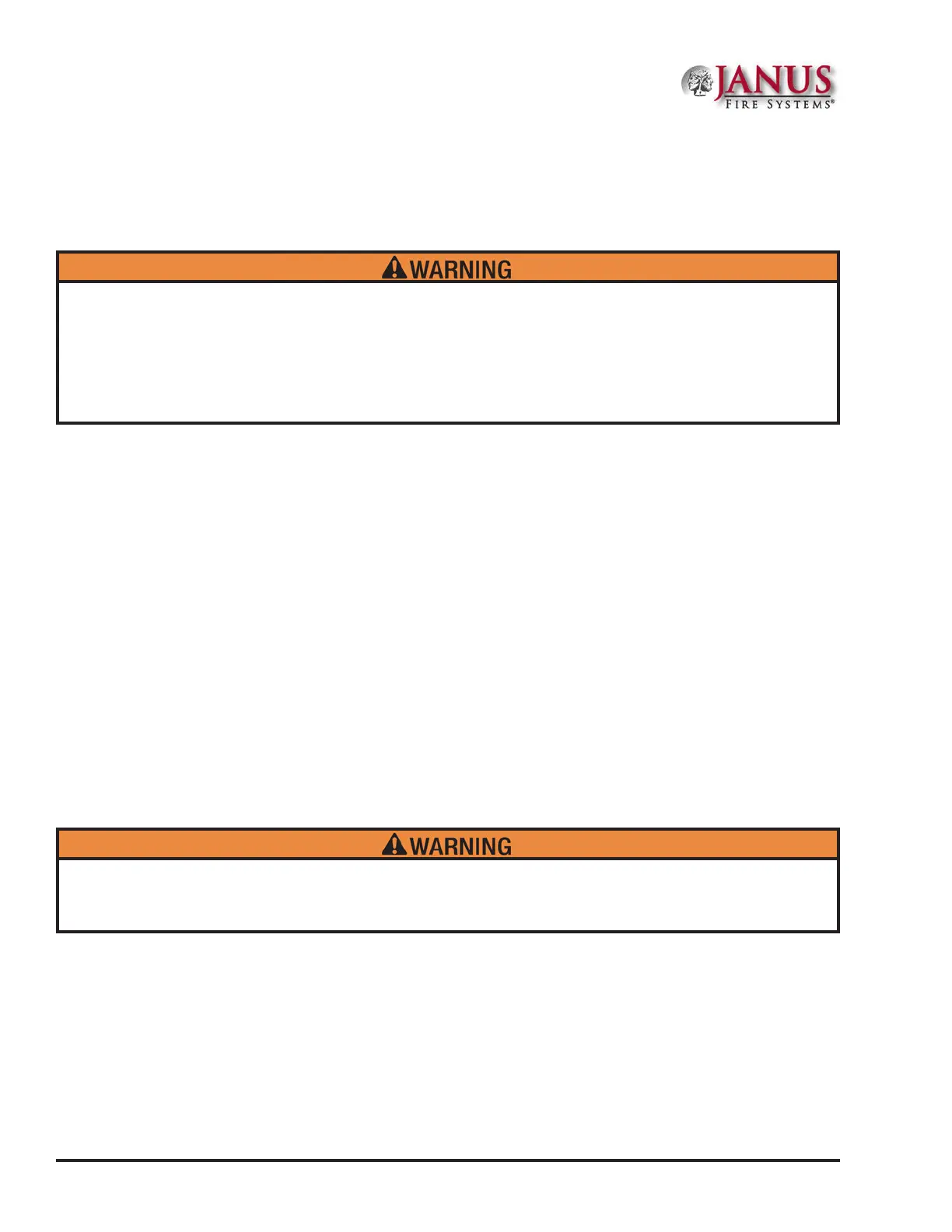Page: 98
MV & LV SERIES ENGINEERED DRY CHEMICAL FIRE EXTINGUISHING SYSTEM
OPERATION, DESIGN, & SERVICE MANUAL
REV C
Document # DOC324
Issued: April 26, 2018
Revised: March 22, 2022
UL FILE # EX27541
Section 7 System Recharge and Reset
7.3 Recharging Agent Cylinder
Recharge consists of removing the cylinder, reconditioning and cleaning the valve assembly, and refilling
and pressurizing the cylinder.
Do not transport the cylinder unless the anti-recoil safety device is in place. Handle the cylinder assembly with
care even when the safety device is in place.
Do not apply excessive force to the low-pressure supervisory switch or attempt to carry the cylinder assembly
or valve assembly by the low-pressure switch. The low-pressure supervisory switch is not designed or intended
tobeusedtocarrythecylinderorvalve.Ifthelow-pressuresupervisoryswitchbreaksatthettingagentwill
discharge through the port causing possible personal injury or property damage.
7.3.1 Removing The Cylinder
1. Remove the electric and pneumatic valve actuators and install the shipping cap onto the valve actuation
connection.
2. Remove the empty cylinders by removing the discharge pipe and installing the anti-recoil safety plug or
device.
3. Disconnect the low-pressure supervisory switch electrical connector.
4. Remove the pressure gauge assemblies from the cylinder valve.
5. Remove the low-pressure supervisory switch assemblies from the cylinder valve
6. Remove the cylinder from the bracket only after ensuring all appropriate safety measures have been
complied with and all relevant warnings noted.
7.3.2 Cleaning and Servicing The Valve Assembly
Janus Fire Systems recommends that the following steps be followed prior to refilling the cylinder(s):
Check the pressure gauge and cylinder weight to verify the cylinder is empty and at atmospheric pressure before
attempting to remove the valve. Failure to comply could result in personal injury or death from violent cylinder
movement or over-exposure to high concentrations of agent.
1. Remove the top cap using the spanner wrench (Mv - P/N 19058 / Lv - P/N 19059).
2. Pull the piston assembly up and out of the top of the valve body using the piston removal tool (P/N
97642) and inspect both the piston and valve body bore for damage.
3. Clean all internal valve surfaces using caution not to scratch or nick the seating surfaces. Ensure the
surfaces are free from foreign materials and dry chemical powders.
